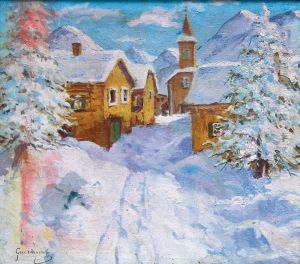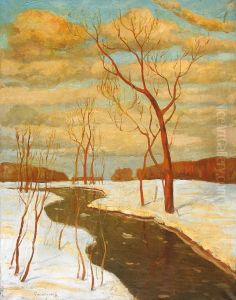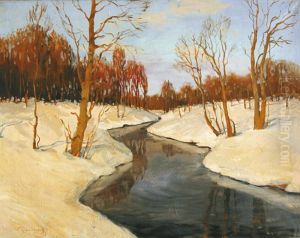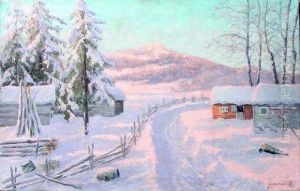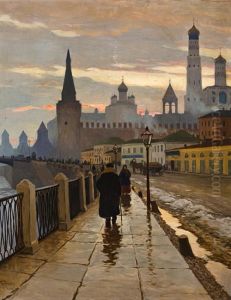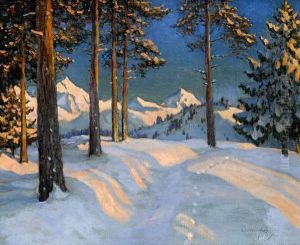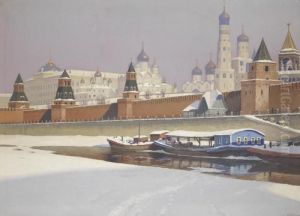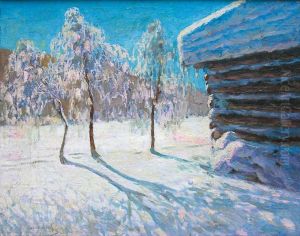Mikhail Markianovitch Guermatcheff Paintings
Mikhail Markianovitch Guermatcheff, also known as Mikhail Guermacheff, was a Russian artist born in the late 19th century, during a time of great cultural and political change. Born in 1881, Guermatcheff experienced the tumultuous environment of Russia leading up to the Revolution of 1917. Although his early life and training are not well-documented, he is known to have been active during a period when Russian art was undergoing significant transformation, with movements such as Russian Symbolism and later, the avant-garde, gaining prominence.
Guermatcheff was part of the wave of Russian artists who emigrated following the Russian Revolution. He settled in France, like many of his contemporaries, where he became associated with the École de Paris, a loose group of artists, many of them Russian émigrés, who were living and working in Paris during the first half of the 20th century. Despite the hardships he faced due to displacement, Guermatcheff continued to develop his artistic style, which was heavily influenced by his Russian heritage and his exposure to Western European art movements.
In his work, Guermatcheff is known for landscapes and cityscapes, often executed in a Post-Impressionist or Expressionist style. His compositions frequently feature bold colors and dynamic brushwork, reflecting the emotional intensity of Expressionism. He was able to capture the essence of his subject matter, whether it was a bustling Parisian street or the serene countryside, through a rich palette and vigorous application of paint.
Guermatcheff's career in France was marked by a struggle for recognition, as was the case for many immigrant artists of the time. Despite this, he managed to exhibit his works in Parisian salons and galleries, earning him a modest reputation among art collectors and critics. His paintings are now considered valuable examples of the Russian diaspora's contribution to early 20th-century art.
Mikhail Markianovitch Guermatcheff's life came to an early end when he passed away in 1934. Although not as widely celebrated as some of his contemporaries, Guermatcheff's work has been appreciated posthumously, with his paintings housed in private collections and occasionally appearing at auctions, where they are prized for their unique blend of Russian sensibility and European modernist aesthetics.
